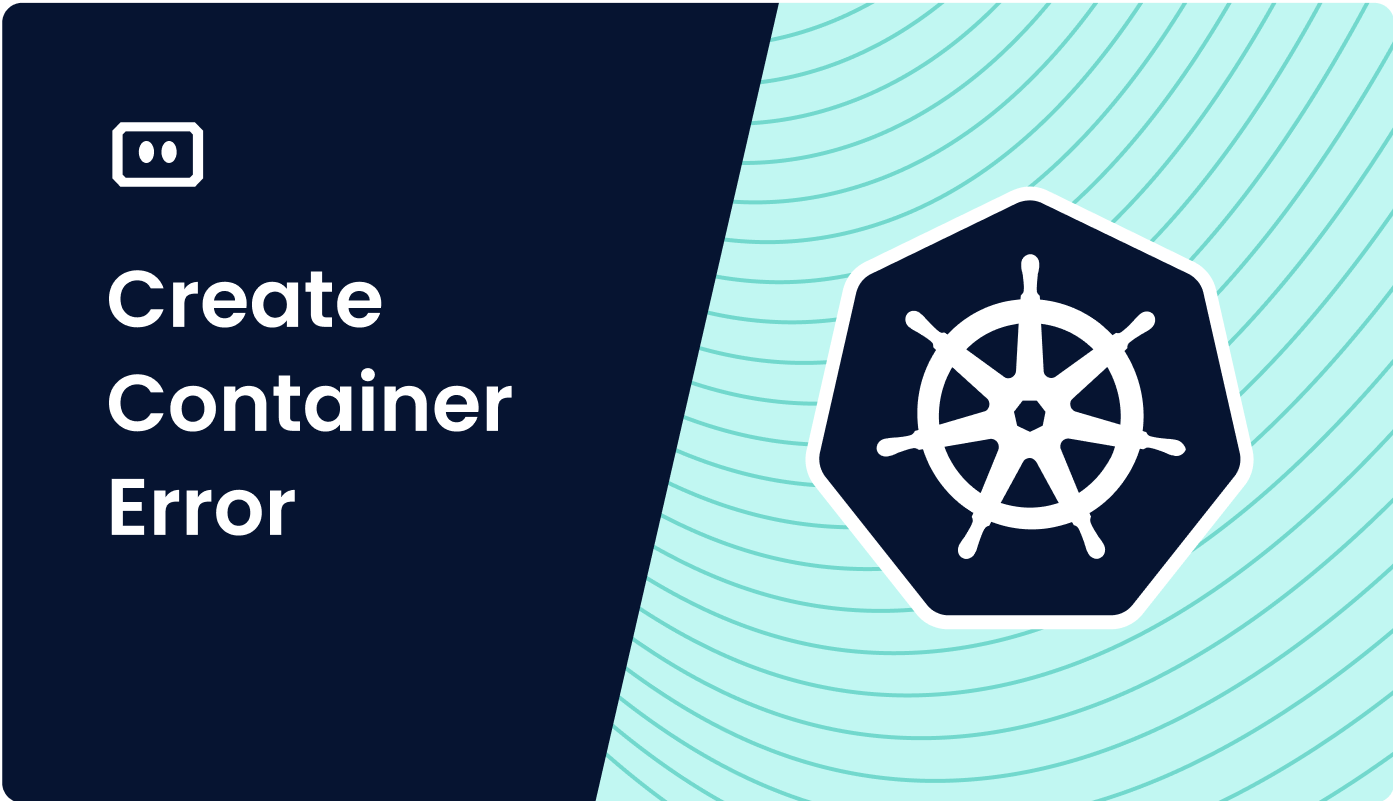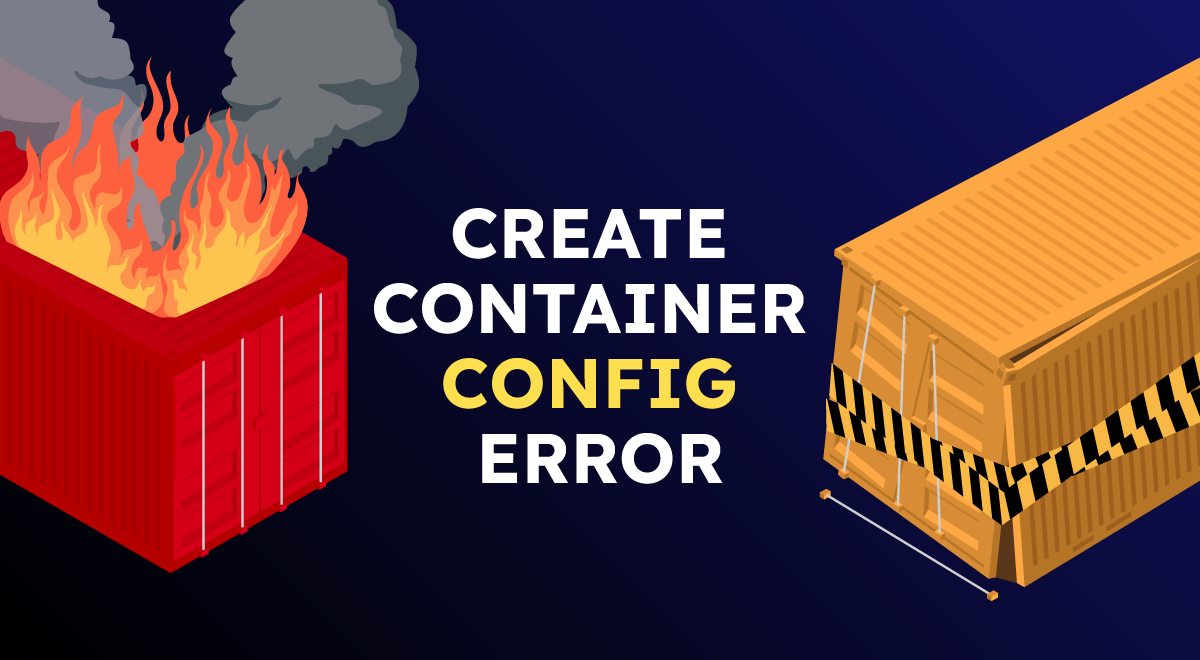Minikube Pod Error: CreateContainerConfigError Troubleshooting
Troubleshooting guide for resolving the "CreateContainerConfigError" Pod status in your Minikube Kubernetes cluster.
Troubleshooting guide for resolving the "CreateContainerConfigError" Pod status in your Minikube Kubernetes cluster.
Troubleshooting pod failures in Kubernetes can be tricky, but a systematic approach can help pinpoint the issue. This guide provides a step-by-step approach to identify and resolve common causes of pod failures:
Check the logs: Start by examining the logs of the affected pod to pinpoint the root cause.
kubectl logs <pod-name> -n <namespace>Verify YAML configuration: Scrutinize your Kubernetes YAML files for any typos or misconfigurations. Pay close attention to:
spec:
containers:
- name: my-container
image: my-registry/my-image:latest spec:
containers:
- name: my-container
resources:
limits:
cpu: 100m
memory: 256Mispec:
containers:
- name: my-container
volumeMounts:
- name: my-volume
mountPath: /dataInspect image availability: Confirm that the container image is accessible from your cluster. Try pulling the image manually:
docker pull <image-name>:<tag>Runtime issues: Investigate potential problems during container startup:
Resource constraints:
Minikube specific: If using Minikube, ensure:
minikube start --cpus=2 --memory=4096mbSecurity Context:
If the issue persists, consider providing more context, including:
This guide provides code examples for troubleshooting Kubernetes pods stuck in "CrashLoopBackOff" status. It covers checking pod logs, verifying YAML configurations for image specifications, resource limits, and volume mounts. It also includes inspecting image availability, addressing runtime issues like dependencies and entrypoint commands, and handling resource constraints like insufficient resources or quota restrictions. Additionally, it provides commands for Minikube-specific configurations and setting up a security context. Remember to replace the placeholders with your actual values and provide more context for further assistance.
This guide provides code examples for troubleshooting "CrashLoopBackOff" errors in Kubernetes pods, based on the provided article.
1. Check the logs:
kubectl logs <pod-name> -n <namespace>Example:
kubectl logs my-app-pod -n production2. Verify YAML configuration:
a) Image specifications:
apiVersion: v1
kind: Pod
metadata:
name: my-app-pod
spec:
containers:
- name: my-app-container
image: my-registry/my-app-image:v1.0.0 b) Resource limits:
apiVersion: v1
kind: Pod
metadata:
name: my-app-pod
spec:
containers:
- name: my-app-container
resources:
limits:
cpu: 200m
memory: 512Mi
requests:
cpu: 100m
memory: 256Mic) Volume mounts:
apiVersion: v1
kind: Pod
metadata:
name: my-app-pod
spec:
containers:
- name: my-app-container
volumeMounts:
- name: data-volume
mountPath: /app/data
volumes:
- name: data-volume
persistentVolumeClaim:
claimName: my-pvc3. Inspect image availability:
docker pull my-registry/my-app-image:v1.0.04. Runtime issues:
a) Dependencies:
# ... other instructions
RUN apt-get update && apt-get install -y \
python3 \
python3-pip
# ... other instructionsb) Entrypoint and command:
apiVersion: v1
kind: Pod
metadata:
name: my-app-pod
spec:
containers:
- name: my-app-container
command: ["python3"]
args: ["/app/main.py"]5. Resource constraints:
a) Insufficient resources: Increase resource limits in your pod YAML (see 2.b).
b) Quota restrictions:
kubectl describe resourcequota -n <namespace>6. Minikube specific:
minikube start --cpus=4 --memory=8192mb7. Security Context:
apiVersion: v1
kind: Pod
metadata:
name: my-app-pod
spec:
securityContext:
runAsUser: 1000
containers:
- name: my-app-container
securityContext:
allowPrivilegeEscalation: falseRemember to replace placeholders like <pod-name>, <namespace>, <image-name>, etc., with your actual values. This guide provides a starting point for troubleshooting "CrashLoopBackOff" errors. For further assistance, provide more context about your specific issue.
General Tips:
kubectl get events -n <namespace> to get a timeline of events related to your pod. This can provide valuable clues about the failure sequence.kubectl describe pod <pod-name> -n <namespace> offers a detailed view of the pod's configuration, status, events, and recent logs.Specific Issues:
Debugging Tools:
kubectl exec -it <pod-name> -n <namespace> -- bash to get a shell inside the running container for live debugging.Beyond the Basics:
Remember, providing detailed information about your specific error messages, YAML configurations, and cluster setup will enable others to assist you more effectively.
This guide provides a concise checklist for troubleshooting the common Kubernetes error "CrashLoopBackOff," indicating a pod's container repeatedly crashes.
1. Analyze Logs:
kubectl logs <pod-name> -n <namespace>2. Review YAML Configuration:
3. Check Image Accessibility:
docker pull <image-name>:<tag>4. Investigate Container Runtime:
5. Address Resource Constraints:
6. Minikube Specific:
7. Security Context:
Need More Help?
Provide the following for further assistance:
By following these troubleshooting steps, you can effectively identify and resolve the root cause of your Kubernetes pod failure, ensuring the smooth operation of your applications. Remember to provide comprehensive information about your issue when seeking further assistance, including relevant YAML configurations, complete error messages, and your Kubernetes cluster setup. This will enable others to provide more targeted and efficient support.
 Fix CreateContainerError, CreateContainerConfigError in K8s | CreateContainerConfigError and CreateContainerError are two of the most common errors in Kubernetes and cloud-native applications. They Can be caused by a variety of factors, including YAML configuration errors, incorrect image specifications, runtime errors, and insufficient resources.
Fix CreateContainerError, CreateContainerConfigError in K8s | CreateContainerConfigError and CreateContainerError are two of the most common errors in Kubernetes and cloud-native applications. They Can be caused by a variety of factors, including YAML configuration errors, incorrect image specifications, runtime errors, and insufficient resources. Fixing CreateContainerConfigError & CreateContainerError | What is CreateContainerConfigError and CreateContainerError in Kubernetes? See common causes and how to fix and debug.
Fixing CreateContainerConfigError & CreateContainerError | What is CreateContainerConfigError and CreateContainerError in Kubernetes? See common causes and how to fix and debug. Kubernetes CreateContainerConfigError and CreateContainerError ... | CreateContainerError and CreateContainerConfigError are two of the most prevalent errors in Kubernetes. Learn more about them here
Kubernetes CreateContainerConfigError and CreateContainerError ... | CreateContainerError and CreateContainerConfigError are two of the most prevalent errors in Kubernetes. Learn more about them here Fix CreateContainerConfigError & CreateContainerError in ... | Learn how to diagnose and resolve CreateContainerConfigError and CreateContainerError in Kubernetes. Discover how to smoothly run your deployments.
Fix CreateContainerConfigError & CreateContainerError in ... | Learn how to diagnose and resolve CreateContainerConfigError and CreateContainerError in Kubernetes. Discover how to smoothly run your deployments. Recreate Kubernetes CVE-2017-1002101 | Suraj Deshmukh | Subpath Volume Mount could give you access to node
Recreate Kubernetes CVE-2017-1002101 | Suraj Deshmukh | Subpath Volume Mount could give you access to node.avif) Fixing CreateContainerError in Kubernetes Pods | Learn | Facing the CreateContainerError in Kubernetes? This article helps you identify the causes and implement solutions to successfully deploy your pods.
Fixing CreateContainerError in Kubernetes Pods | Learn | Facing the CreateContainerError in Kubernetes? This article helps you identify the causes and implement solutions to successfully deploy your pods.